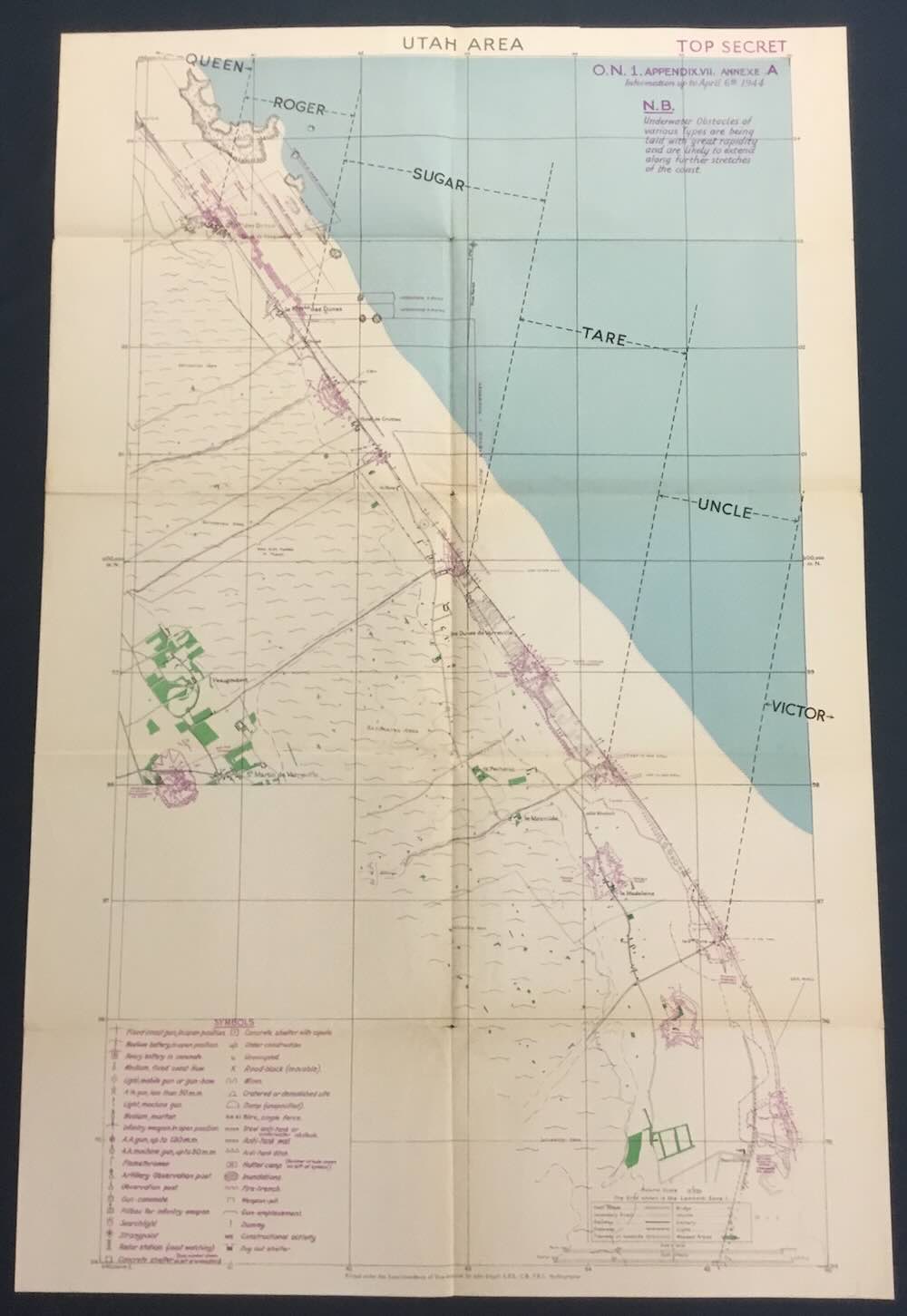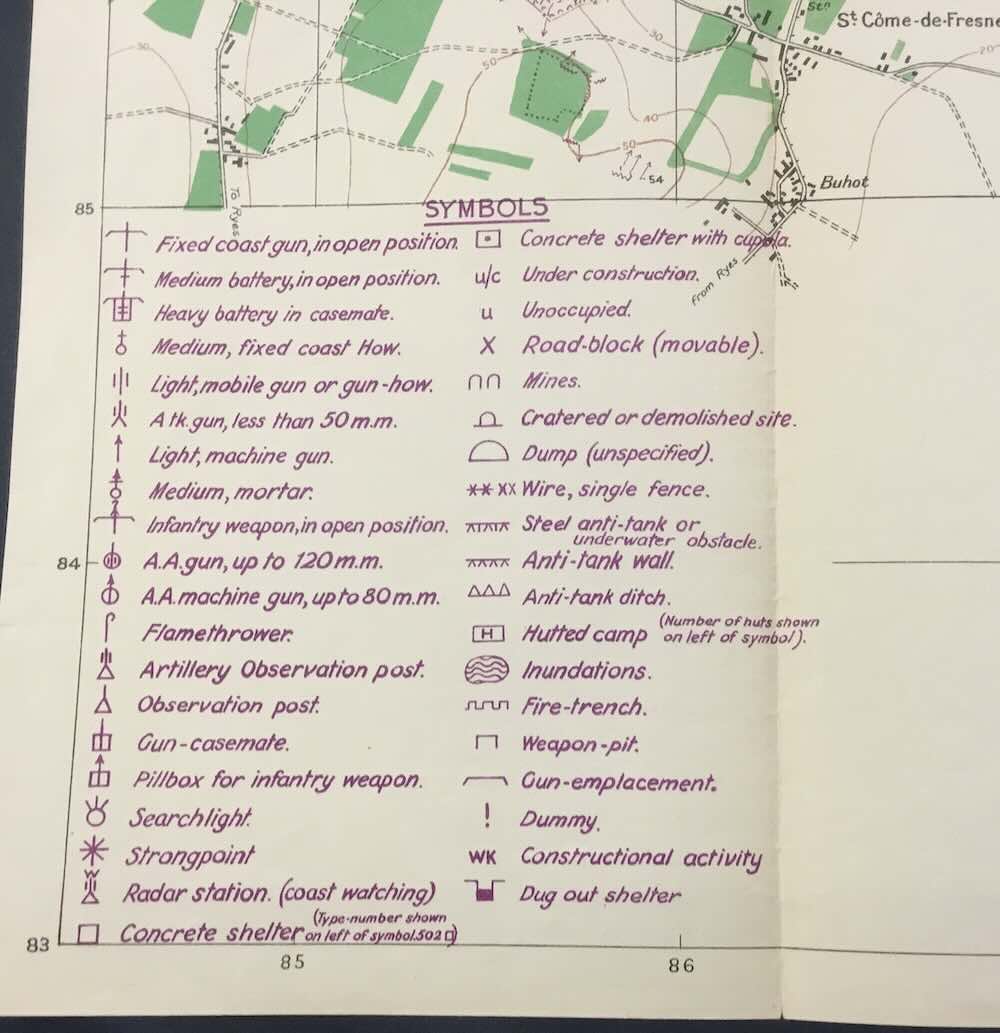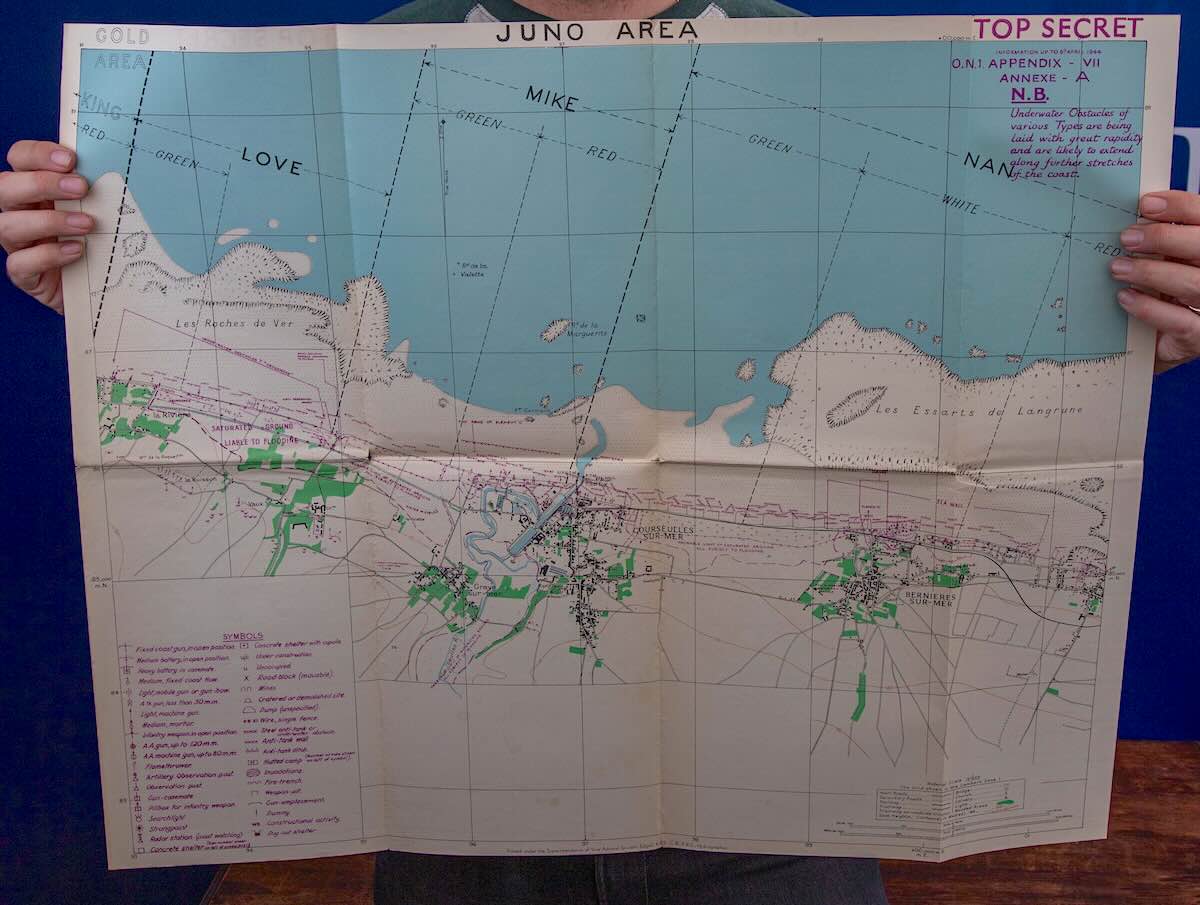Top Secret D-Day Maps Found In Cardboard Box Detail Scary Defenses Faced By Allies At The 5 Landing Beaches

Top-secret WWII maps used by Allied troops for the famous D-Day landings were found in a cardboard box after being purchased for just $10.
Five of the six maps provide restricted-access detail of the five landing beaches of Utah, Omaha, Gold, Juno and Sword, with the sixth one—for landing craft pilots—showing all the beaches
Each map features the French terrain—hills, woods, villages, and roads—but most importantly, they outline in chilling detail the German defenses, including barbed wire, minefields marked in purple ink, and even flamethrowers.
The collection had been in the possession of Royal Naval sub-lieutenant Walter Page who served on Landing Craft Tank 2138. His landing craft was one of 900 which played a vital role in transporting men and supplies across the English Channel on that fateful day.
The maps only came to light when their current owner finally looked through a box of memorabilia purchased at a previous auction—for which he paid just ten bucks.
This week, the documents will be auctioned off by Hansons Auctioneers in Derbyshire, England, beginning August 13. Bids can be placed online at their website.
The six maps will be sold individually, but they’re expected to fetch up to $20,000 in total.

“Imagine landing on a strange shore under enemy fire and not knowing where you were going or what hazards awaited,” said Hansons’ military expert, Matt Crowson.
“It is amazing to think, had it not been for the eagle-eyed vendor [sorting through his newly purchased box of papers] they would likely never have seen the light of day.”
More than 150,000 Allied troops were involved in the successful effort to push the Nazi defenders back from the Normandy beaches, as they sought to decisively turn the tide of WWII.
While the Americans focused on the western beaches of Utah and Omaha, the British and Canadians landed on the eastern shores of Gold, Juno and Sword.
Creating up-to-date maps of the shorelines was vital for Allied success, so, for months, photo-reconnaissance aircraft had helped create an accurate record of the French coast.

ANOTHER LUCKY FIND: War Hero Codebreaker Alan Turing’s Papers Found in Loft And Saved From Shredder to Fetch Record $625,000
And because it wasn’t known exactly where D-Day would take place, maps had to be developed for a wide area of France.
The formidable German fortifications featured 2,500 anti-tank obstacles acting as shoreline defense, while hundreds of submerged mines proved fatal to troops wading ashore.
Minefields behind the beaches coupled with barbed wire and anti-tank ditches also made advancement even more difficult.
The detailed D-Day maps were 1:12,500 scale, meaning that one kilometer on the ground is represented by eight centimeters.

The maps are also divided into different sectors, in the case of Gold Beach, the area is further made up of Item, Jig and King (using the phonetic alphabet of the 1940s). Each sector was then sub-divided into “red” and “green”.
Walter Page and his Landing Craft crew were part of Assault Force ‘U’1, when soldiers stormed Utah Beach in the first wave of landings at 6:30 AM on June 6, 1944.
EVER HEARD OF THIS? Rare WWII Pigeon Parachute Used to Carry Messages to French Resistance Ahead of D-Day Found in Old Shoebox
“The maps are rare and important documents that mark the beginning of the liberation of Western Europe from Nazi Germany,” said the Auctioneer’s website.
Visit the Auctioneer’s website for more information and to place a bid starting on Wednesday (scroll down a little to see the maps).






Please be good and do not spam. Thank you.